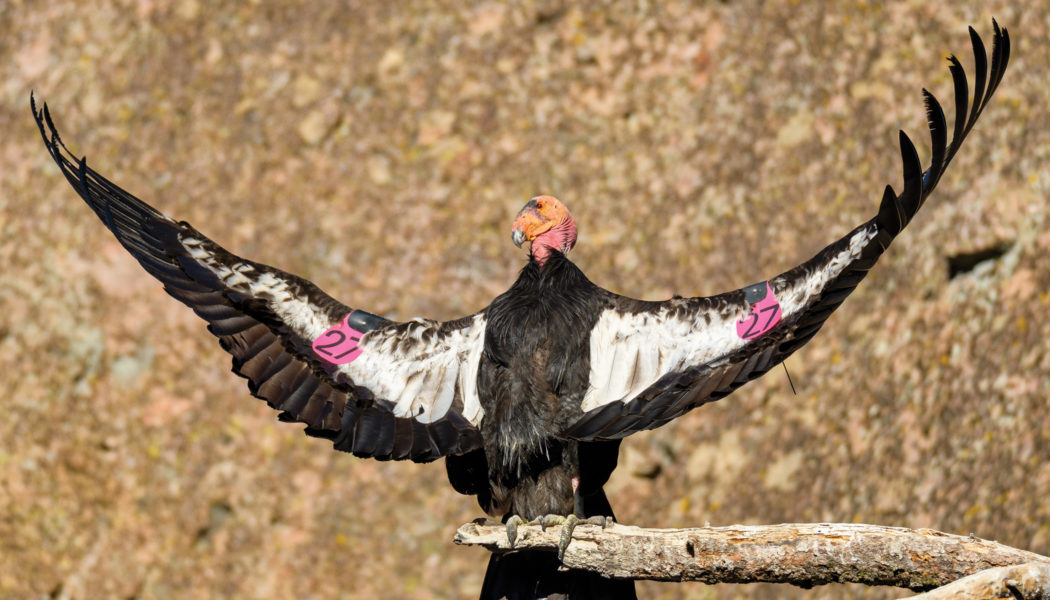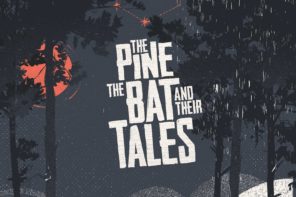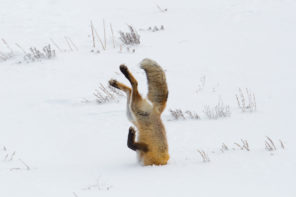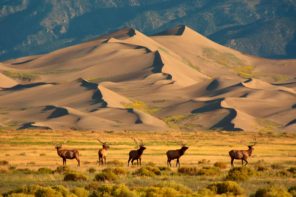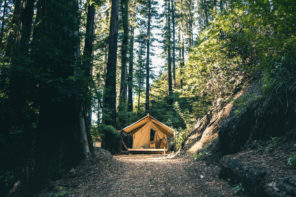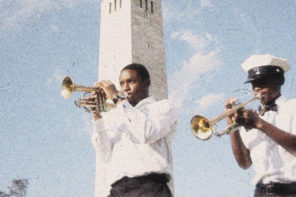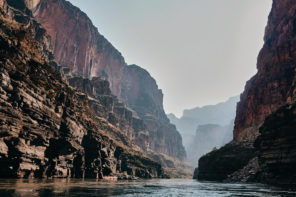The partnership of National Parks and the Endangered Species Act: A Day with the Condors
Photo and Words by Joshua Asel
If I want to catch a glimpse of one of the world’s rarest animals, I know getting up at 3:30 in the morning to drive from my friend’s place in San Jose, California, is totally worth it, even if I happen to only get four hours of sleep. As always, I’m dying to see North America’s largest bird, which happens to make its impressive home in the newest national park in California, Pinnacles National Park, est. 2013.
I’ve been going there for a few years now, and normally I grab a campsite here so I can get a bit more sleep before ascending the spire-covered mountain at around 5:00 am to meet the critically endangered California condors at the highest spires in the park during sunrise. Recently, there has been a major change to the park: It’s blowing up in popularity. My favorite campsite that I used to roll into whenever I wanted is now booked three months out, not to mention all other campsites, 120 of them, were fully booked for the next month. It’s great that Pinnacles is getting so much recognition, but at the same time, I love empty trails.
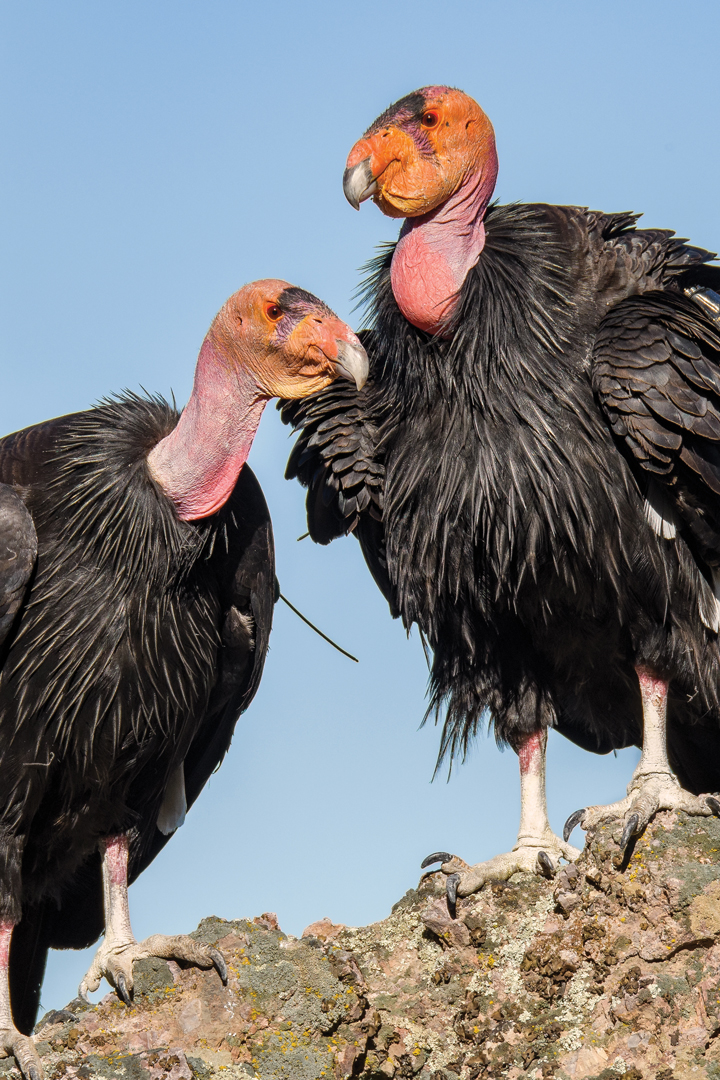
The word is out. People want a piece of Pinnacles. Despite the national park’s relatively small size, it’s home to ancient giant orange spires covered in neon-colored lichen, trails that turn pink right after sunset, peregrine and prairie falcons, golden eagles, rare talus caves available to explore, amazing blooms in springtime, views that don’t quit and great rock climbing. But the crème de la crème of the park are the California condors.
Eager visitors make the steep three-mile hike to the top to have the chance to see the closest thing to a flying dinosaur up close and personal. “Many people come to the park to catch a view of a condor during their visit. We often hear tales from excited visitors about their experiences seeing a condor flying so close they could hear the wind whistling through the wings, or they saw two condors perched together on rocks in the High Peaks,” said Alacia Welch, the Condor Program Manager at Pinnacles. If you’re lucky enough to see one of these birds with nearly ten-foot wingspans fly close enough to look you directly in the eye, you can sense their unique intelligence paired with their graceful power. Condors are as amazing as the place they make their homes, which, in Central California, also includes one of the greatest meetings of mountains, ocean and earth: Big Sur.
Protecting threatened and endangered species is central to the National Park Service’s mission.
The success of bringing back this formerly extinct-in-the-wild species is significantly due to the prosperity of Pinnacles National Park. In turn, the park’s success in transforming from a national monument to a national park in 2013 is significantly due to California condors, which were the poster child for the park’s classification change. Even though these condors almost went extinct permanently, mainly from lead poisoning, there are about 300 free-flying individuals back in the wild, with about 90 in Central California, thanks to intense conservation efforts.
Indeed, over 600 threatened and endangered species live under the protections of national parks in the U.S., with less than one percent of all species protected under the Endangered Species Act (ESA) succumbing to extinction. Protecting threatened and endangered species is central to the National Park Service’s mission. Wildlife and nature lovers clamoring to see them with their own eyes directly fund the conservation—not to mention the sales that come from souvenirs. Naturally, the park’s fee also goes towards paying the salaries of the park’s workers and towards keeping the park open, so the more people who go to see these rare animals, the better the park does overall. To give you a better idea of the significance of this partnership between national parks and the ESA, more than half of all national parks are home to threatened and endangered species, and more than a third of all ESA-listed species call a national park home.
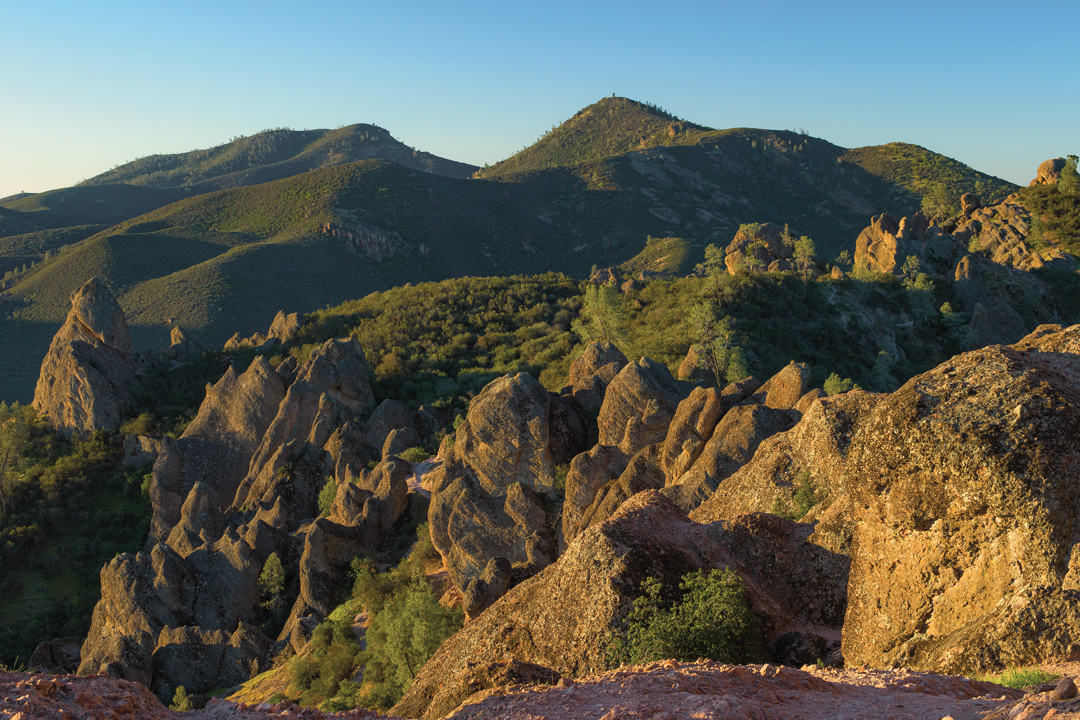
Back on the trail, I reach the condor’s main roosting site where they enjoy warming themselves in the dawn sun. I even get a glimpse at a new young couple mating, which is great because the population still needs a massive boost in numbers. Restoration efforts are paying off. Their wing tags read “747” (the female) and “800” (the male). The tag’s numbers and colors correspond to their age and sex, which is how biologists and studied fans of the condors tell them apart. They also have GPS devices attached to show who’s going where and at what time, incredibly useful for data tracking. The lessons learned from all the research going on here, and across all national parks regarding the ESA, help inform and support science-based policy. The more I come here, the more I can see this land of prehistoric proportions begin to thrive in modern times. Pinnacles and the California condors combined are a prime example of the benefits national parks and the ESA reap from each other. National parks can even increase their land size if biologists find that species under protection have bigger home ranges. On top of that, this historic partnership can eliminate mining, limit ocean vessel traffic, take down dams, and stop other harmful practices that are not only detrimental to wildlife but to humans too.
Forming more complete natural landscapes helps build more resilient ecosystems that benefit parks and their surrounding communities, including Native American tribes and First Nations peoples.
Although there are currently no plans to expand Pinnacles, it’s with the cooperation of other private landowners who keep their land relatively wild or safe that condors will have a chance to thrive in other landscapes. Alacia explains that “condors require relatively undeveloped areas to thrive, and they cover thousands of square miles each year. Given their huge home range size, it isn’t practical for all of their habitat to exist within a national park or across multiple national parks. Instead, open landscapes used for agriculture and areas protected from urban development by conservation easements and other land management agencies together provide suitable habitat for condors.”
Forming more complete natural landscapes helps build more resilient ecosystems that benefit parks and their surrounding communities, including Native American tribes and First Nations peoples. And in the power of further restoration to natural habitats and wildlife come the increase in recreational opportunities and benefits to tribal culture, which, again, increases funding. A National Park Service study found that every federal dollar invested equals a ten-dollar return directly into the surrounding communities. For example, after grey wolves were reintroduced into Yellowstone National Park, visitor traffic increased by 3.7%, which added $35.5 million in annual visitor spending. I don’t know about you but knowing how far my dollar goes just by spending it in national parks is incredibly satisfying to me. Visitors’ dollars support thousands of jobs per state and many billions of dollars being invested directly back into local economies. That funding also enhances visitors’ general experiences, contributes to more scientific research, increases protections, improves the capacity to manage, and helps park expansions.
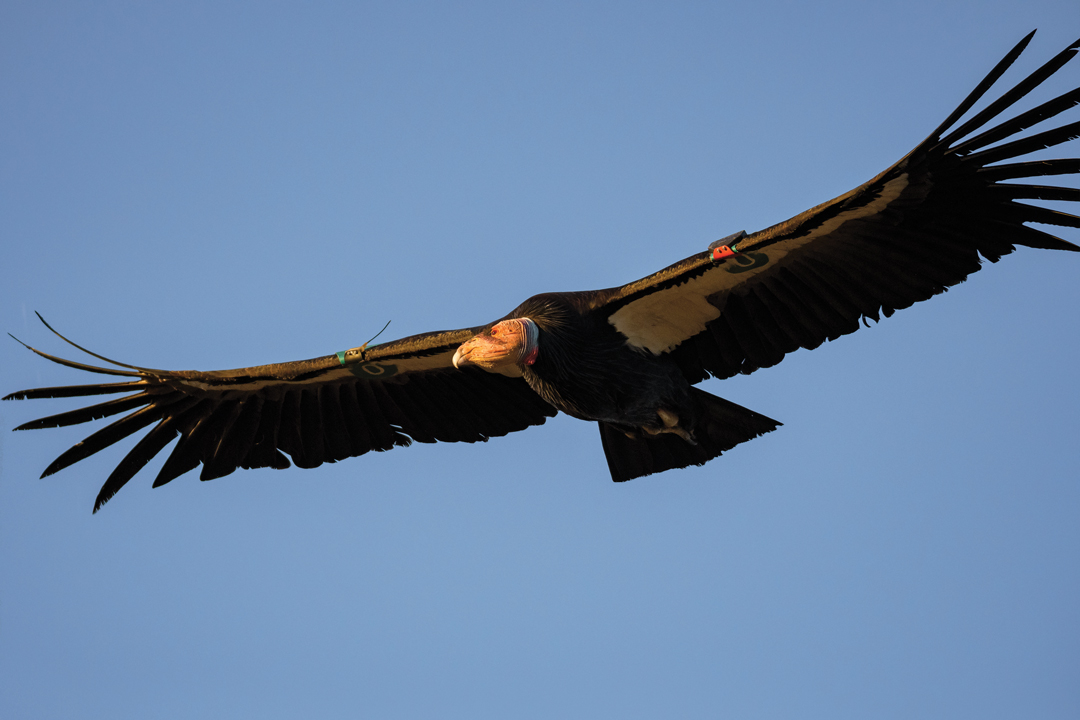
The Endangered Species Act and its original creator, Les Lo Baugh, Jr., thank you for making these types of changes and numbers possible.
Back at Pinnacles, it’s been a whole day spent at the top of High Peaks looking and waiting for condors, helping new and old generations find a connection to this place using my natural history knowledge plus camera images (blowing their minds in the process), and overall appreciating the awesome experience I get every time I’m here. The visitors start to stream back down before sunset and soon enough I’m all alone with the condors, who are making a slow flight back to their roosts.
Some of the flying giants notice me during the last minutes of light and then swoop in close enough to look me directly in the eyes. I can’t help but smile my biggest smile and gawk at them, slack-jawed in awe. The adults’ heads and necks reflect the same colors as the sunset. I can hear the wind flow past their massive wing tips, almost like the sound of dozens of swords simultaneously swinging through the air. Despite being the biggest bird in North America, they are maybe the most graceful fliers I’ve ever encountered on two continents. These are the types of moments I live for. Now if I could just get a damn campsite.
To learn more about how you can get involved visit fws.gov.

